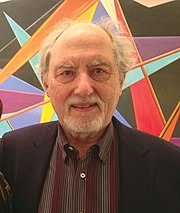
Clement Greenberg, occasionally writing under the pseudonym K. Hardesh, was an American essayist known mainly as an art critic closely associated with American modern art of the mid-20th century and a formalist aesthetician. He is best remembered for his association with the art movement abstract expressionism and the painter Jackson Pollock.

Donald Kuspit is an American art critic and poet, known for his practice of psychoanalytic art criticism. He has published on the subjects of avant-garde aesthetics, postmodernism, modern art, and conceptual art.
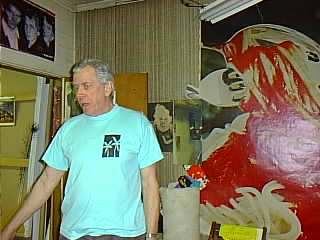
Edward Francis Paschke was an American painter of Polish descent. His childhood interest in animation and cartoons, as well as his father's creativity in wood carving and construction, led him toward a career in art. As a student at the School of the Art Institute of Chicago he was influenced by many artists featured in the museum's special exhibitions, in particular the work of Gauguin, Picasso and Seurat.

Manierre Dawson was an abstract American painter and sculptor.
The Chicago Imagists are a group of representational artists associated with the School of the Art Institute of Chicago who exhibited at the Hyde Park Art Center in the late 1960s.
Visual arts of Chicago refers to paintings, prints, illustrations, textile art, sculpture, ceramics and other visual artworks produced in Chicago or by people with a connection to Chicago. Since World War II, Chicago visual art has had a strong individualistic streak, little influenced by outside fashions. "One of the unique characteristics of Chicago," said Pennsylvania Academy of Fine Arts curator Bob Cozzolino, "is there's always been a very pronounced effort to not be derivative, to not follow the status quo." The Chicago art world has been described as having "a stubborn sense ... of tolerant pluralism." However, Chicago's art scene is "critically neglected." Critic Andrew Patner has said, "Chicago's commitment to figurative painting, dating back to the post-War period, has often put it at odds with New York critics and dealers." It is argued that Chicago art is rarely found in Chicago museums; some of the most remarkable Chicago artworks are found in other cities.

Thornton Willis is an American abstract painter. He has contributed to the New York School of painting since the late 1960s. Viewed as a member of the Third Generation of American Abstract Expressionists, his work is associated with Abstract Expressionism, Lyrical Abstraction, Process Art, Postminimalism, Bio-morphic Cubism and Color Field painting.

Phyllis Bramson is an American artist, based in Chicago and known for "richly ornamental, excessive and decadent" paintings described as walking a tightrope between "edginess and eroticism." She combines eclectic influences, such as kitsch culture, Rococo art and Orientalism, in juxtapositions of fantastical figures, decorative patterns and objects, and pastoral landscapes that affirm the pleasures and follies of romantic desire, imagination and looking. Bramson shares tendencies with the Chicago Imagists and broader Chicago tradition of surreal representation in her use of expressionist figuration, vernacular culture, bright color, and sexual imagery. Curator Lynne Warren wrote of her 30-year retrospective at the Chicago Cultural Center, "Bramson passionately paints from her center, so uniquely shaped in her formative years […] her lovely colors, fluttery, vignette compositions, and flowery and cartoony imagery create works that are really like no one else's. Writer Miranda McClintic said that Bramson's works "incorporate the passionate complexity of eastern mythology, the sexual innuendos of soap operas and sometimes the happy endings of cartoons." Bramson's work has been exhibited in exhibitions and surveys at the Museum of Contemporary Art, Chicago (MCA), the Art Institute of Chicago, the Smithsonian Institution, and Corcoran Gallery of Art. In more than forty one-person exhibitions, she has shown at the New Museum, Fort Wayne Museum of Art, Boulder Art Museum, University of West Virginia Museum, and numerous galleries. She has been widely reviewed and recognized with John S. Guggenheim and Rockefeller foundation grants and the Anonymous Was A Woman Award, among others. She was one of the founding members of the early women's art collaborative Artemisia Gallery and a long-time professor at the School of Art and Design at the University of Illinois at Chicago, until retiring in 2007.
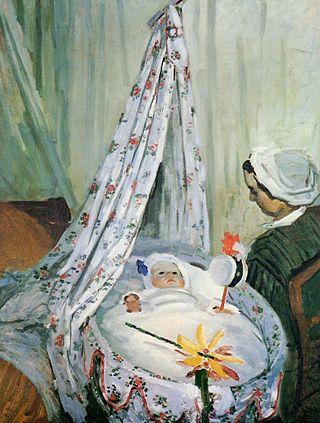
Jean Monet was the eldest son of French Impressionist artist Claude Monet and Camille Doncieux Monet and the brother of Michel Monet. He was the subject of several paintings by his father and married his step-sister, Blanche Hoschedé.
Lisa Wainwright is an American art historian at the School of the Art Institute of Chicago. She previously served SAIC as the Dean of Faculty and Vice President of Academic Affairs, as well as Title IX officer for faculty. Wainwright received a Ph.D. in the history of 19th and 20th-century art, University of Illinois, 1993; an M.A. in history of 19th and 20th-century art, University of Illinois, December 1986, and a B.A. cum laude, Vanderbilt University, art history, June 1982. She also studied at the Goethe-Institut in Blaubeuren, Germany, in summer 1982.

Richard Wetzel is an American artist. He is best known for his oil paintings but also has exhibited collages and sculpture. In 1969 and 1970, Wetzel exhibited with the Chicago Imagists, a grouping of Chicago artists who were ascendant in the late 1960s and early 1970s.

Miyoko Ito was an American artist known for her watercolor and abstract oil paintings and prints. Ito was part of an informal group of like-minded, but visually diverse Chicago painters, self-named the "Allusive Abstractionists" and formed in 1981. The group, which also included William Conger, Richard Loving and Frank Piatek, was formed to spark dialogue and make space for a wider conception of abstraction that included more subjective, metaphorical work. Though tangentially involved with the Chicago Imagists, Ito's own style diverged and synthesized cubism and surrealism.

Corey Postiglione is an American artist, art critic and educator. He is a member of the American Abstract Artists in New York, and known for precise, often minimalist work that "both spans and explores the collective passage from modernism to postmodernism" in contemporary art practice and theory. New Art Examiner co-founder Jane Allen, writing in 1976, described him as "an important influence on the development of contemporary Chicago abstraction." In 2008, Chicago Tribuneart critic Alan G. Artner wrote "Postiglione has created a strong, consistent body of work that developed in cycles, now edging closer to representation, now moving further away, but remaining rigorous in approach to form as well as seductive in markmaking and color."

Don Baum (1922–2008) was an American curator, artist and educator, most known as a key impresario and promoter of the Chicago Imagists, a group of artists that had an enduring impact on American art in the later twentieth century. Described by the Museum of Contemporary Art, Chicago (MCA) as "an indispensable curator of the Chicago school," Baum was known for lively and irreverent exhibitions that offered fresh perspectives combining elements of Surrealism and Pop and that broke down barriers between schooled and untrained, or so-called outsider artists. From 1956 to 1972, Baum was exhibitions director at Chicago's Hyde Park Art Center. It was there, in the 1960s, that he became involved with a group of young artists he exhibited as "Hairy Who" that later expanded to become the Chicago Imagists. That group included Ed Paschke, Jim Nutt, Roger Brown, Gladys Nilsson, and Karl Wirsum. Baum mounted two major shows at the MCA that featured the emerging artists in their first museum exhibitions: "Don Baum Sez: 'Chicago Needs Famous Artists'" (1969) and "Made in Chicago" (1973), which shaped a vision of Chicago's art world as a place of meticulous craftsmanship and vernacular inspiration.

Rodney Carswell is an American abstract artist. He first gained recognition for human-scaled, geometric paintings that feature exposed, projected support structures, creating interplay between sculptural presence and richly painted pictorial surfaces. His recent paintings eschew the superstructures and evoke a greater sense of immediacy, playfulness, and narrative. Critics often describe Carswell's work as uncanny, elusive or quirky, for its tendency to negotiate "in-between" spaces and embrace contradictions such as order and instability, intention and accident, or back and front. Employing irregularly shaped canvasses, thick supports, and openings or holes that reveal the stretcher construction and walls behind them, works like 3 (1994) often occupy a place between painting and sculpture. In a similar way, Carswell uses the modernist languages of Minimalism, Suprematism and Constructivism, yet eludes those categories with postmodern allusions to architecture, the body and spiritual iconography, and with his process-oriented, "hand-made" surfaces. In his essay for Carswell's mid-career retrospective at Chicago's Renaissance Society, Los Angeles Times critic David Pagel suggested that his understated paintings worked their way into the one's consciousness in a "supple, somewhat unsettling manner" that achieves a subtle, but lingering shift in perception.

David Sharpe is an American artist, known for his stylized and expressionist paintings of the figure and landscape and for early works of densely packed, organic abstraction. He was trained at the School of the Art Institute of Chicago and worked in Chicago until 1970, when he moved to New York City, where he remains. Sharpe has exhibited at the Whitney Museum of American Art, Art Institute of Chicago, Museum of Contemporary Art Chicago (MCA), The Drawing Center, Aldrich Museum of Contemporary Art, Indianapolis Museum of Art, and Chicago Cultural Center, among many venues. His work has been reviewed in Art in America, ARTnews, Arts Magazine, New Art Examiner, the New York Times, and the Chicago Tribune, and been acquired by public institutions such as the Art Institute of Chicago, Scottish National Gallery of Modern Art, MCA Chicago, Smart Museum of Art, and Mary and Leigh Block Museum of Art, among many.

Paul Christopher Lamantia is an American visual artist, known for paintings and drawings that explore dark psychosexual imagery. He studied at the School of the Art Institute of Chicago and emerged in the 1960s and 1970s as part of the larger group of artists known as the Chicago Imagists.

Frank Piatek is an American artist, known for abstract, illusionistic paintings of tubular forms and three-dimensional works exploring spirituality, cultural memory and the creative process. Piatek emerged in the mid-1960s, among a group of Chicago artists exploring various types of organic abstraction that shared qualities with the Chicago Imagists; his work, however relies more on suggestion than expressionistic representation. In Art in Chicago 1945-1995, the Museum of Contemporary Art, Chicago (MCA) described Piatek as playing “a crucial role in the development and refinement of abstract painting in Chicago" with carefully rendered, biomorphic compositions that illustrate the dialectical relationship between Chicago's idiosyncratic abstract and figurative styles. Piatek's work has been exhibited at institutions including the Whitney Museum, Art Institute of Chicago, MCA Chicago, National Museum, Szczecin in Poland, and Terra Museum of American Art; it belongs to the public art collections of the Art Institute of Chicago and MCA Chicago, among others. Curator Lynne Warren describes Piatek as "the quintessential Chicago artist—a highly individualistic, introspective outsider" who has developed a "unique and deeply felt world view from an artistically isolated vantage point." Piatek lives and works in Chicago with his wife, painter and SAIC professor Judith Geichman, and has taught at the School of the Art Institute of Chicago since 1974.
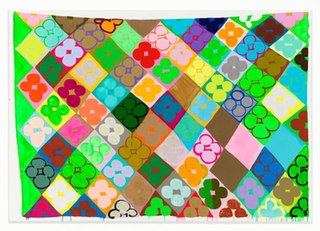
Judy Ledgerwood is an American abstract painter and educator, who has been based in Chicago. Her work confronts fundamental, historical and contemporary issues in abstract painting within a largely high-modernist vocabulary that she often complicates and subverts. Ledgerwood stages traditionally feminine-coded elements—cosmetic and décor-related colors, references to ornamental and craft traditions—on a scale associated with so-called "heroic" abstraction; critics suggest her work enacts an upending or "domestication" of modernist male authority that opens the tradition to allusions to female sexuality, design, glamour and pop culture. Critic John Yau writes, "In Ledgerwood’s paintings the viewer encounters elements of humor, instances of surprise, celebrations of female sexuality, forms of vulgar tactility, and intense and unpredictable combinations of color. There is nothing formulaic about her approach."
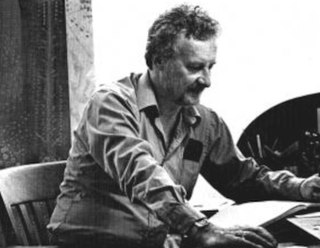
Richard Loving (1924–2021) was an American artist and educator, primarily based in Chicago, Illinois. He gained recognition in the 1980s as a member of the "Allusive Abstractionists," an informal group of Chicago painters, whose individual forms of organic abstraction embraced evocative imagery and metaphor, counter to the dominant minimalist mode. He is most known for paintings that critics describe as metaphysical and visionary, which move fluidly between abstraction and representation, personalized symbolism taking organic and geometric forms, and chaos and order. They are often characterized by bright patterns of dotted lines and dashes, enigmatic spatial fields, and an illuminated quality. In 2010, critic James Yood wrote that Loving's work "mull[ed] over the possibilities of pattern and representation, of narrative and allegory" to attain a kind of wisdom, transcendence and acknowledgement of universals, "seeking understanding of self within the poetics of the physical world."
